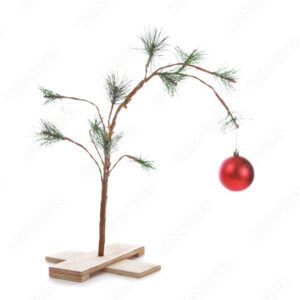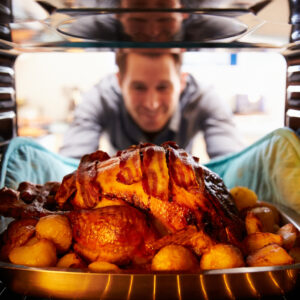For many of us, this holiday season will be our first in years to spend indoors with loved ones. But as we prepare to eat, drink, and be merry, we should also be ready for some holiday disruptions. Risk is high for shoppers around the world to encounter shortages and price increases for seasonal staples.
Fortunately, if you work in supply chain management you are ready for the challenge. You have the skills to head into year-end celebrations with flexibility and resilience. You can pivot to alternative traditions if you can’t source your favorite items, and you recognize that changing plans may cost you a bit more.
Here are some of the highest-risk scarcities to expect this season, and our suggestions for how to navigate holiday disruptions with good cheer.
New party snacks are coming to town
Your neighbor Anita always throws a great holiday party, and this year is her first one back after the COVID-19 pandemic. But when you arrive, you notice that a few of her legendary dishes you were looking forward to are missing: No brie-en-croute or orange glazed-chicken wings this year.

Party menus worldwide may require tweaking because butter, eggs, and egg-based products from mayonnaise to pasta and dips are in short supply. Prices are soaring, and grocery stores are setting purchase limits for cartons of eggs or pounds of butter per buyer. Shortages of these critical ingredients and end products mean fewer traditional breakfasts, hors d’oeuvres, cookies, pies, and other baked goods.
In addition, high energy, gas, and diesel costs around the globe, particularly in Europe, are driving up the cost of producing and moving food. These transportation costs are a major component in bread price increases since this product is transported daily.
For eggs, the deadliest avian flu outbreak in recorded history is decimating wild bird and commercial poultry populations in the U.S. and Europe. More than 52.4 million birds have died or been culled in the U.S. alone, nearly 50 million in Europe, and it’s spreading in Asia and South America.
No worries for your party – Anita is a terrific cook, and her fill-in dishes put you in the holiday spirit. You head home ready to spend the weekend decking your halls with seasonal decorations.
Deck the halls with boughs of alternates
It’s the first holiday season in years that your family will gather indoors at your house for festivities, and you’ve decided to decorate like never before. You envision colorful wreaths, ribbons and bows, candles, garlands, and maybe even two or three decorated trees. You’d better hop on it because evergreen trees, wreaths, and garlands are selling out much earlier in the season.

Even if you find a tree, it may look a little sparse. Holiday evergreens have faced difficult growing conditions over the last few years due to record-high temperatures and lack of rainfall. Trees have responded to drought conditions by shedding needles earlier than usual this year, leaving evergreen branches bare.
Fortunately, you have a few boxes of artificial garland and a wreath in the basement, and at least they won’t trigger anyone’s tree allergies. If you don’t manage to get a tree, you can spiff things up with some extra ribbon, candles, and colorful ornaments.
Have yourself a merry different dinner
This year you’re determined to try making one of those deep-fried turkeys. You’ve got the giant vat and propane tank, but good luck finding a bird or enough oil to cook it in. After coming up short at every grocery in town, you realize this may be a better year for ham or roast beef instead.
Widespread avian flu means a holiday turkey, goose, or duck is harder to find and costs more than usual. All poultry products are disrupted this year, including foie gras. Farmers and processors face increased labor, fuel, feed, and water costs. LDC, the largest French poultry producer, will raise prices by as much as 10% due to higher energy costs.

Worldwide drought conditions hurt food and grain crops, along with vegetable oils. Elevated temperatures and droughts led to reduced cranberry yields in North America, while flooding in Australia greatly reduced the potato crop. This growing season saw problematic weather in some of the largest agricultural areas around the globe – South America, Europe, the U.S., Canada, Chile, and Australia. Worldwide produce prices have been rising steadily over the past two years.
Ham it is, and if you’re not rigid about side dishes, you should have little problem finding an assortment of vegetables. Try a new-to-you recipe for a comforting starchy side dish like polenta, rice pilaf, or even couscous.
All is flat for New Year’s Day
With the year finally drawing to a close, you’re ready to say cheers to 2022 and welcome a better 2023. But that New Year’s Eve toast may be just out of reach this year due to a worldwide Champagne shortage. With COVID restrictions lifted, more people are gathering and celebrating together, which is increasing demand for alcohol and other festive items. The strong U.S. dollar against the Euro has caused an uptick in U.S. sales of Champagne, lowering availability in Europe.
Fortunately, you remain flexible. You pivot to prosecco and then espresso martinis, forgetting the rule of never switching drinks. In the excitement of the evening, you may make a few too many toasts and then wake up nursing a post-celebration headache.

Actually, try not to do that because acetaminophen and ibuprofen have become harder to come by. With flu season kicking into high gear, painkillers are in high demand. But most of their ingredients are made in China, where zero-COVID policy lockdowns have slowed or halted production.
Hopefully, a New Year’s Day headache is the worst of your holiday worries. Food and commodity shortages always hit marginalized and underserved communities the hardest, and disruption can be even more painful during holidays. But if your inconveniences are limited to party food, decorations, and holiday dinners, a flexible attitude and quick alternate plans should keep your season running smoothly.
What are our major takeaways from 2022? Read the 8 days that defined supply chain disruption in 2022.